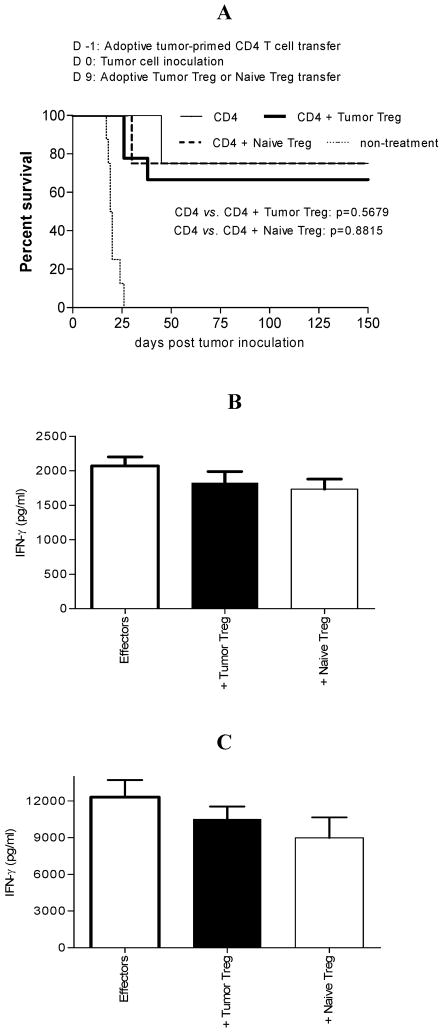FIGURE 4.
Neither tumor Treg nor naïve Treg suppress antitumor immunity at the effector phase of the immune response induced by adoptively-transferred CD4+ T cells. A. Purified tumor-primed CD4+ T cells were adoptively transferred into naïve BALB/c mice on d −1. These mice were inoculated with tumor cells on d 0. Tumor Treg or naïve Treg were adoptively transferred on d 9. Mice adoptively transferred with tumor-primed CD4+ T cells alone served as a positive control. Mice without treatment served as a negative control. Animal survival is presented using Kaplan-Meier Survival Curves. The data represents two independent experiments with 4–5 mice per group. CD4 (n=8), CD4 + tumor Treg (n=9), CD4 + naïve Treg (n=8), non-treatment (n=8). B. Effectors from tumor-rejection mice were cultured with tumor Treg or naïve Treg in vitro. IFN-γ in the culture supernatant was determined by ELISA. Effectors vs. Effectors + tumor Treg or naïve Treg: NS. The data represents two independent experiments. C. Tumor Treg or naïve Treg were adoptively transferred into tumor-rejection mice, and effectors from these mice were cultured in vitro. IFN-γ in the culture supernatant was determined by ELISA. Effectors vs. Effectors + tumor Treg or naïve Treg: NS. The data represents two independent experiments.

